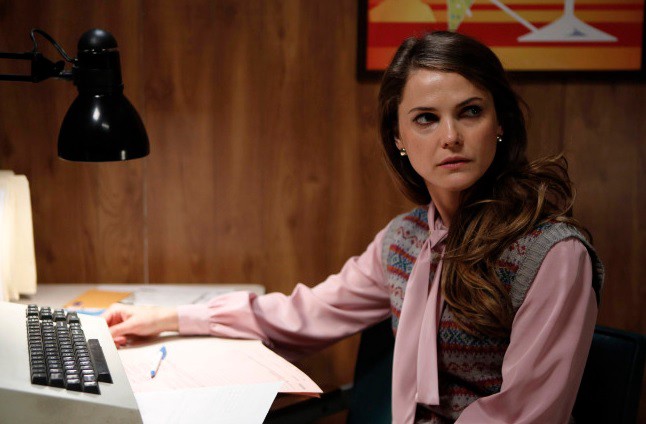FX isn’t proud of their track record when it comes to hiring women and people of color behind the scenes. DGA research shows that in the 2014–15 TV season, only 12 percent of FX’s directors were women or people of color — the lowest percentage of any network. But the network behind “The Americans” and “The People v. O.J. Simpson” is making an effort toward real, tangible change. Variety reports, “At the moment, 51 percent of the directors booked by FX and FXX are men and women of color, or white women.”
The network reportedly felt it was necessary to diversify after a 2015 Variety article by Maureen Ryan called out FX and other networks for their overwhelmingly white and male directing rosters.
“We set a goal that wasn’t incremental but quantum, in terms of what we wanted to achieve,” FX CEO John Landgraf told Variety. “Part of it is, if you’re going to go from a laggard to a leader, try to get to something you can actually achieve and sustain that looks like real change.”
Landgraf is also working towards having more shows created by women and people of color. FX will premiere Pamela Adlon’s “Better Things” and Donald Glover’s “Atlanta” this September.
“I hadn’t been really focused on directors, I had been more focused on this question of storytellers in the broad sense, and how do we get everyone’s story told — not just white males,” Landgraf recalled. “How do we get the right shows, the right executive producers? Because ultimately that changes the composition of the way a story is told and presented and it does ultimately change the composition of the employee base.” As research from Dr. Martha Lauzen illustrates, “Programs with at least one woman executive producer or creator featured a higher percentage of female characters and employed substantially greater percentages of women writers, directors, and editors than programs with exclusively male executive producers or creators.”
Landgraf attributed the lack of female directors and directors of color to “working in a system that was racially biased.” He admitted, “ [We] weren’t taking responsibility for stepping up and acknowledging that and saying, ‘OK, we will be the change.’”
But FX is now determined to be the change, and Landgraf said, “I wish I had done it years ago.” He hopes that FX will motivate other networks to follow suit. “The thing that’s most exciting to me about this is that this group of people has proven that it’s just a matter of priorities,” he stated. “It’s just a matter of will, and it can be done. Nobody really can say, ‘It can’t be done,’ or ‘It’ll take 10 years to do it.’ It can be done now.” He emphasized, “No one can rightly argue that this cannot be achieved or that achieving it would cause some hardship from a commercial standpoint or qualitative standpoint.” As Variety points out, “In 2016, the year in which it set out to expand its directorial talent pool, FX set a record for the number of Emmy nominations received by a basic-cable network.”
Landgraf identified the first step of his process as sending a letter to showrunners and notifying them “that diversifying the pool of directors was a significant priority.”
Variety writes, “It’s worth noting that the statistics released annually by the DGA and the numbers FX shared with Variety have been tabulated differently; it’s not an apples-to-apples comparison. DGA stats are published on a year-to-year basis (and the guild will be releasing its report in a few weeks). FX, on the other hand, considered the most recent seasons of its comedy and drama series and the upcoming seasons of shows that have not yet debuted; thus the time frame covered by their data set is longer than a single year.”
The network has 170 director slots for 17 series. Of those 170 slots, 21 are currently unfilled, but of the 149 that have been booked, 76 — which amounts to over 50 percent — have gone to men and women of color and white women. Variety summarizes, “The breakdown is as follows: 73 slots went to white men (49 percent); 32 directing gigs went to men of color (21 percent); 11 jobs went to women of color (7 percent); and 33 helming jobs went to white women (22 percent ).” So, that means that less than 30 percent of directing gigs went to women. There’s still a long way to go — particularly when it comes to hiring women of color — but FX definitely seems to be on the right track.
“White males are only, depending on how you count them, somewhere between 31 percent and 36 percent of the U.S. population,” Landgraf explained. “There’s nothing in my mind that says they ought to have 50 percent of the directing jobs.” He added, “It’s not a panacea. It’s a beginning.”
To hear more from Landgraf about who he credits for FX’s success, how they sought out new hires, and his thoughts about why equity matters, check out an in-depth interview with him over at Variety.







